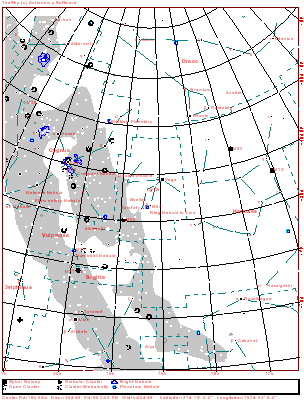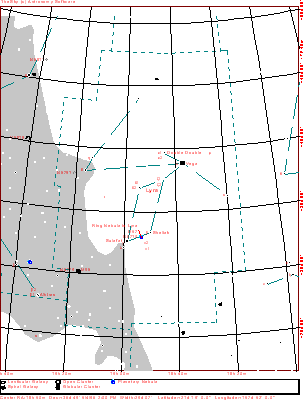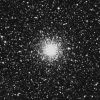
| Home | Deepsky Atlas | TheAstronews | Links | Solar System | ||||||

Hawaiian Astronomical SocietyConstellations: Lyra -- The Lyre of Orpheus |
||||||||||
We have yet to hear a story where such instructions get followed. Torn by doubts, Orpheus looked back. We might forgive him, but the powers of the deep never do. Orpheus saw his wife. They reached for each other, but she melted from his grasp. The gates of the deep crashed, closing on Eurydice, and hurling Orpheus on the surface of the earth.
Orpheus wandered alone seven months, singing and playing the lyre. Trees and flowers followed him. Beasts and birds came to listen. A band of women in a drunken frenzy, followers of Dionysus, encountered him. When he would not have sex with them, they tore him limb from limb, scattering his remains and taking his head to the island of Lesbos. The rest of his body received burial in Thrace, where the nightingales now sing more sweetly than anywhere else on earth. Apollo bent down from heaven, gathered the lyre, and placed it in the sky.
In a sequel: At the time of Christ there existed a mystery cult dedicated to Orpheus. Stressing ecstatic experience without the use of alcohol, the members also celebrated the ritualized death of Dionysus.

Click the map for a 909x1199 version of the above. Click here for a map better suited for use in the field.

This a more detailed view of the constellation. The map displays stars to magnitude 10, and deepsky objects to magnitude 12. Click here for a map better suited for use in the field.
 78k JPEG M56 (NGC6779) is a fairly bright (mag. 8.3), large (7'), somewhat irregular, rich, and condensed globular found 3.8° NW of Albireo (beta Cygni). The Milky Way is a blessing and a curse: A curse because it dims the object. A blessing because M56 lies in a rich field. Image from the Digital Sky Survey. 78k JPEG M56 (NGC6779) is a fairly bright (mag. 8.3), large (7'), somewhat irregular, rich, and condensed globular found 3.8° NW of Albireo (beta Cygni). The Milky Way is a blessing and a curse: A curse because it dims the object. A blessing because M56 lies in a rich field. Image from the Digital Sky Survey.
|
Second image description: This was a focal-plane image of the f10 instrument. The 'ZOOM' mode of MiPS was used to scale the image with no apparent loss of resolution.
|
If you have any questions about the Hawaiian Astronomical Society
please
(link requires javascript).